FLOWERS
33 Plants That Use Their Beauty as a Deadly Disguise
Published
2 months agoon

Shutterstock
Plants: nature’s way of showing off its flair for design, drama, and sometimes, danger. Sure, they’re beautiful, but lurking beneath those vibrant petals and lush greenery, some are more villain than victim. These are the double agents of the botanical world—ready to dazzle you one moment and doom you the next. So buckle up, plant enthusiasts—it’s about to get thorny (pun definitely intended).
Oleander
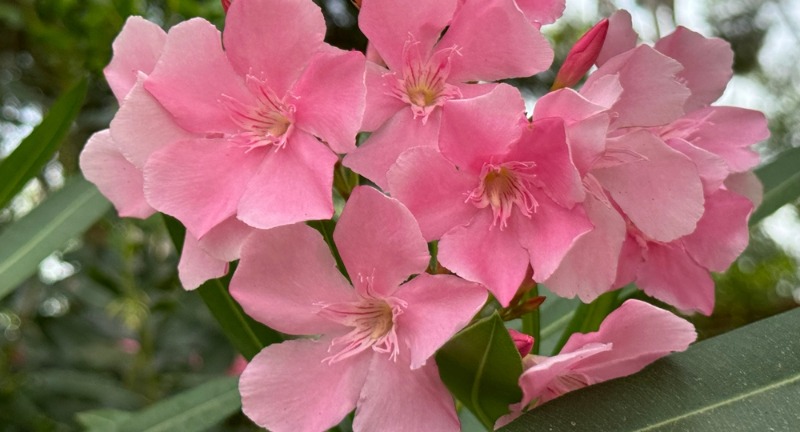
Shutterstock
Oleander, while appearing glamorous and bold, is also utterly unforgiving under the surface. Its pink and white blooms look like something out of a romantic postcard, but don’t be fooled. This plant is packed with toxins so potent they’ve been used in ancient poisons, and even the smoke from burning it is dangerous.
Monkshood
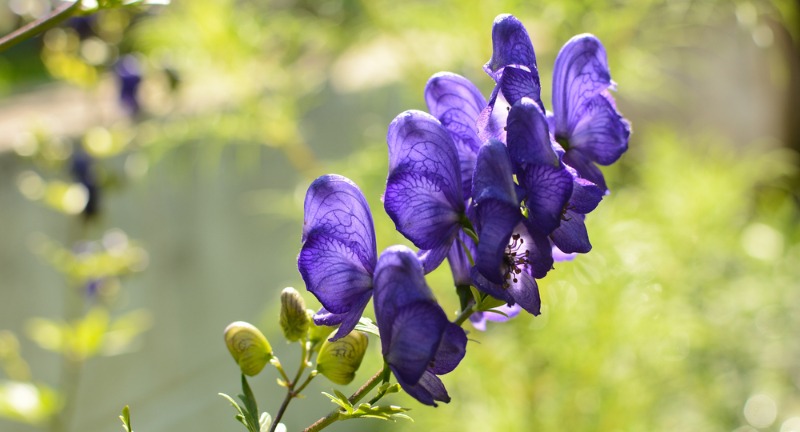
Shutterstock
Monkshood is as dangerous as it is visually striking. Every part of this plant is highly toxic, with its roots and flowers containing aconitine, a potent neurotoxin that can cause severe poisoning or even death if ingested. Historically, it was used to tip arrows and in ancient poisons, underscoring its lethal reputation. Even handling it without gloves can result in skin irritation or numbness, making it a plant to avoid entirely.
Sundew
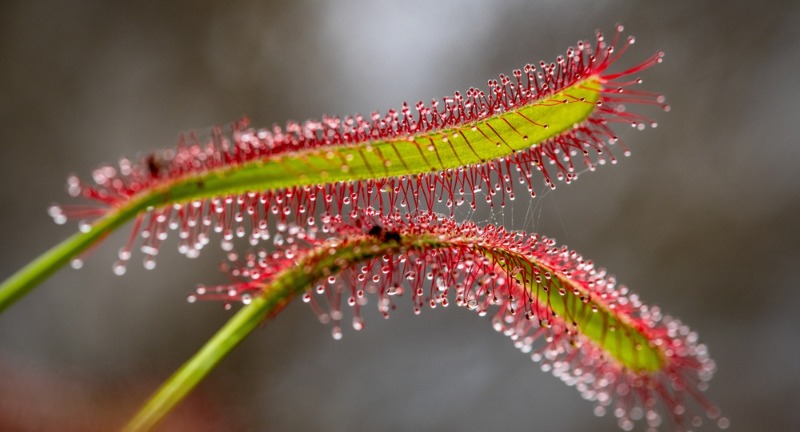
Shutterstock
The Sundew plant is a glittering trap, covered in sticky tentacles that glisten like morning dew. Insects lured by its shine are quickly ensnared and digested, proving this plant doesn’t just sit pretty. It’s harmless to humans, but its efficiency in catching prey is downright mesmerizing. Think of it as the silent assassin of the botanical world.
Angel’s Trumpet
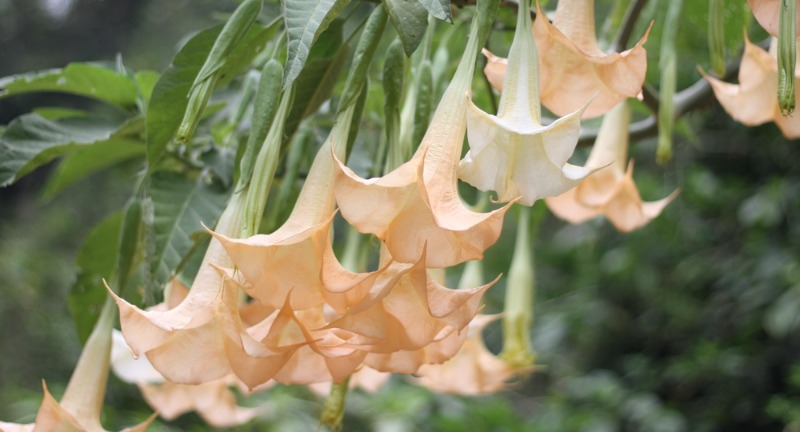
Shutterstock
Angel’s Trumpet dangles its enormous, bell-shaped flowers like a musical invitation to disaster. This plant is beautiful enough to stop you in your tracks—but it might stop more than that. Containing potent hallucinogens, it’s been linked to some pretty grim outcomes for the overly curious. It’s proof that sometimes, even angels can be deceptive.
Castor Bean Plant
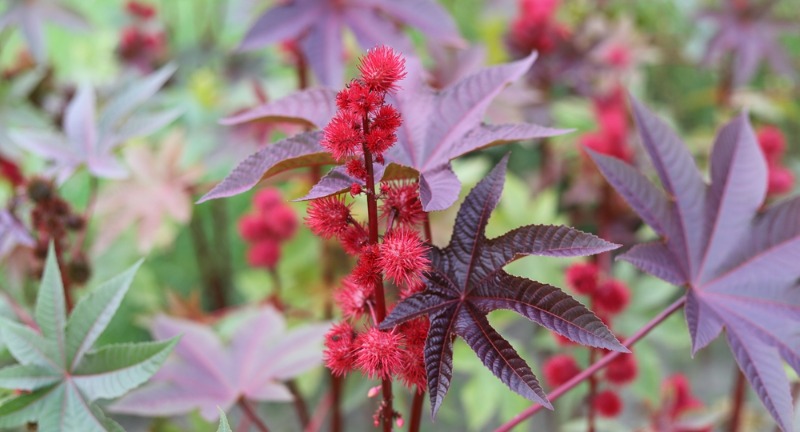
Shutterstock
The Castor Bean Plant stands out with its striking foliage and vivid seed pods, but its beauty conceals a deadly secret. The seeds contain ricin, a toxin so potent that even a small amount can be fatal if ingested. However, the plant also produces castor oil, which is safely processed to remove the toxin and widely used in medicine and industry. Despite its practical uses, the unprocessed plant poses significant risks, making it a hazardous choice for gardens or landscapes.
Deadly Nightshade
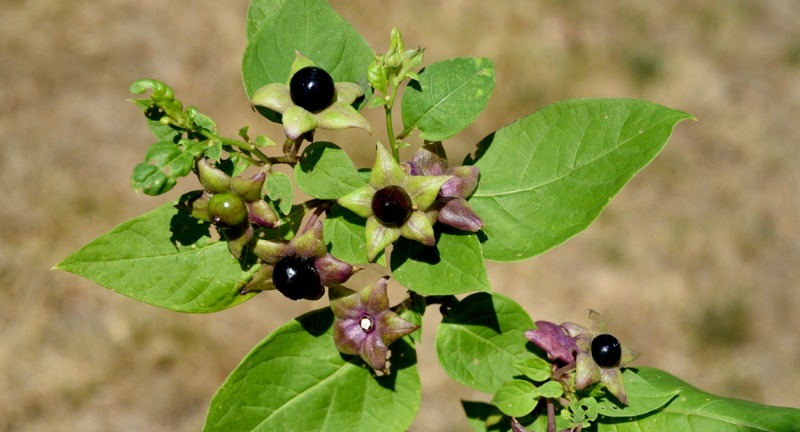
Shutterstock
Deadly Nightshade doesn’t hide behind subtleties; the name says it all. Despite its dark reputation, this plant flaunts berries that look like forbidden treats from a fairytale. A single berry can be fatal, though, making this less “happily ever after” and more “tragic ending.”
White Baneberry (Doll’s Eyes)
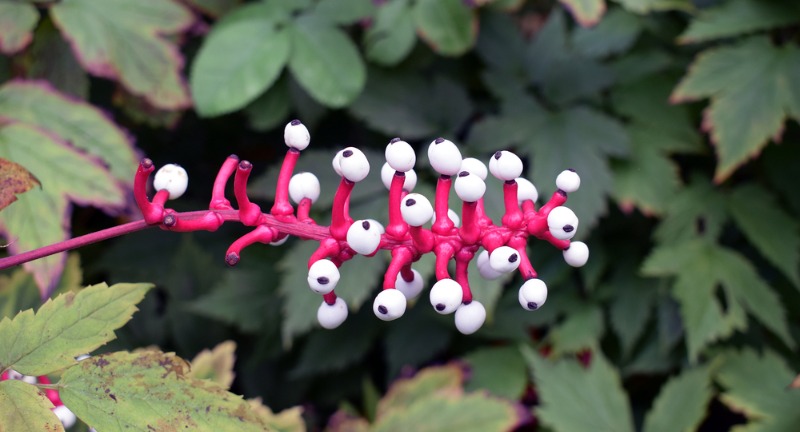
Shutterstock
White Baneberry, or “Doll’s Eyes,” looks like it’s auditioning for a horror movie with its eerie, eyeball-like berries. The real scare, however, is that those “eyes” are laced with toxins that can stop a human heart in its tracks. Birds, of course, munch away unaffected—because nature loves a loophole. If you’re into creepy aesthetics, this plant checks all the boxes. Still, make sure to keep your wits about you—or maybe just your distance.
Rosary Pea
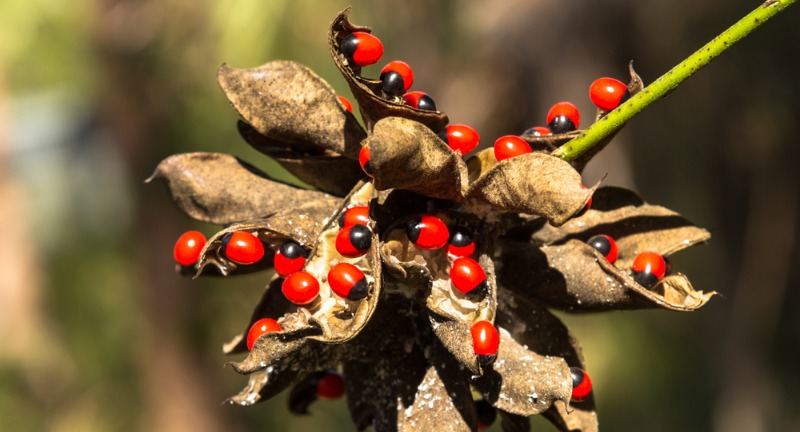
Shutterstock
The Rosary Pea is a tiny bead of terror often used in jewelry, ironically close to where you least want it: your skin. Its seeds contain abrin, a toxin so potent that even a small dose can be fatal. It’s almost poetic how something so small and shiny can pack such a deadly punch. Consider it the plant world’s version of “deadly elegance.”
Venus Flytrap
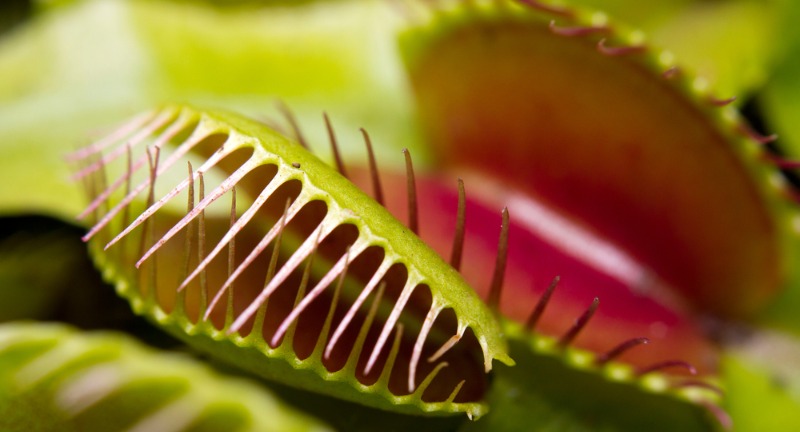
Shutterstock
The Venus Flytrap is the ultimate predator in plant form, snapping shut on unsuspecting bugs with uncanny speed. While it’s harmless to humans, its dramatic hunting style earns it a spot among nature’s deadliest-looking plants. It’s like the plant version of an action movie star: flashy, effective, and undeniably cool. Just make sure not to poke it—it’s not for show.
Foxglove
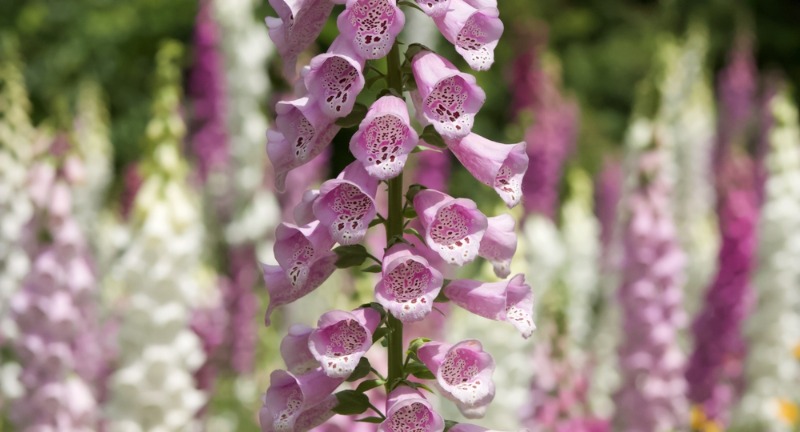
Shutterstock
Foxglove, with its tall spires of bell-shaped blooms, is undeniably beautiful but equally perilous. This plant contains compounds used to create the heart medication digoxin, yet in its natural form, every part of it is toxic. Ingesting even a small amount can lead to symptoms like nausea, dizziness, or fatal heart irregularities. Its striking appearance makes it a favorite in gardens, but its dangers demand careful handling and a strict no-ingestion rule.
Poison Hemlock
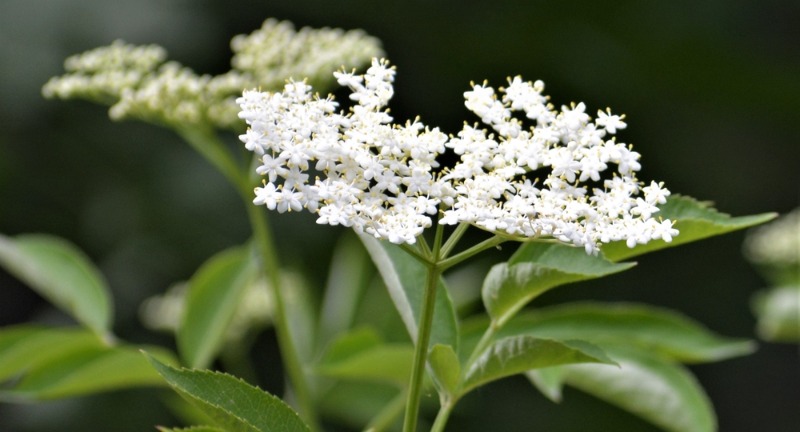
Shutterstock
Poison Hemlock’s delicate white flowers might look like they belong in a wedding bouquet, but they’re better suited for a crime scene. This is the infamous plant that took down Socrates, proving it has a flair for historical drama. Its lacy elegance belies a sinister nature, making it a botanical wolf in sheep’s clothing. The lesson? Don’t judge a plant by its blossoms.
Jimsonweed (Datura)
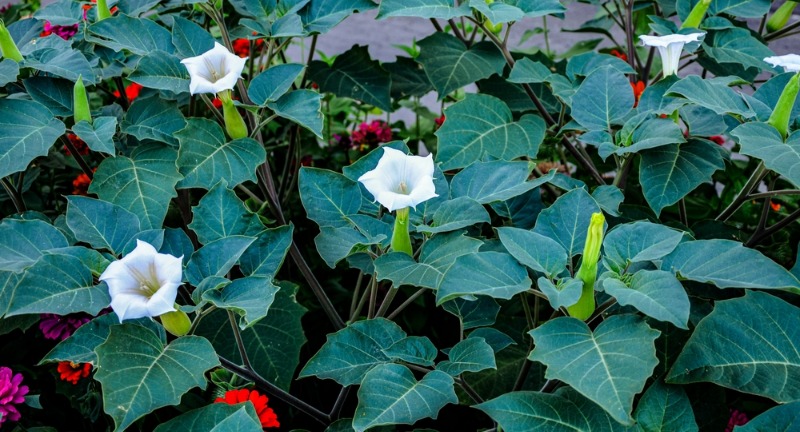
Shutterstock
Jimsonweed, also known as Devil’s Weed, is a deceptively beautiful plant that hides a dangerous secret. Its large, trumpet-shaped flowers may seem inviting, but the plant contains tropane alkaloids, which can cause delirium, hallucinations, and even death when consumed. All parts of the plant are toxic, including its seeds, which are especially potent.
Lily of the Valley

Shutterstock
Lily of the Valley looks like a string of pearls gifted by nature, but its dainty bells carry a secret weapon: cardiac glycosides. Even a small dose can cause serious heart issues. Despite its toxicity, it symbolizes sweetness and humility in folklore, which really just feels like a mixed message. Let’s just say it’s a gift you don’t want to accept too enthusiastically.
Autumn Crocus

Shutterstock
The Autumn Crocus greets the colder seasons with stunning lilac blooms, but don’t let its charm fool you. It contains colchicine, a compound that’s as toxic as it is useful in medicine. Even small amounts can lead to symptoms that range from unpleasant to fatal. It’s basically the plant version of “looks can be deceiving.”
English Yew
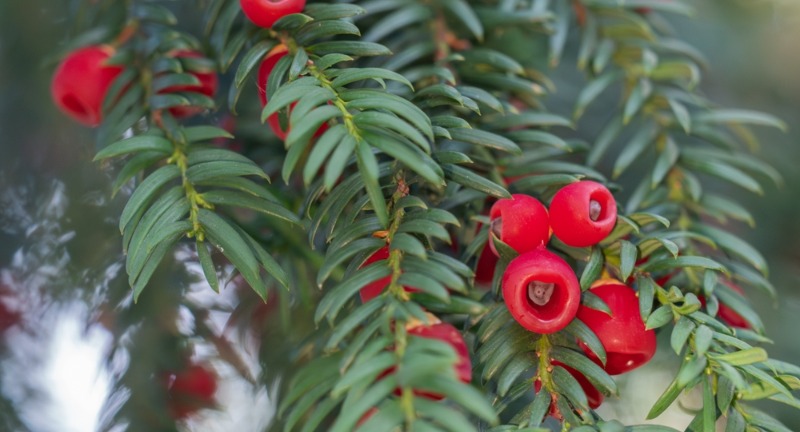
Shutterstock
The English Yew is the ultimate paradox: it’s a symbol of immortality in churchyards yet can quickly end a life. Its needles and seeds are full of toxins that can cause fatal heart issues, making it both revered and feared. Birds, however, seem immune and gleefully feast on the red berries, as if mocking the rest of us. This is a tree with an aura of mystery, elegance, and just a sprinkle of doom.
Strychnine Tree
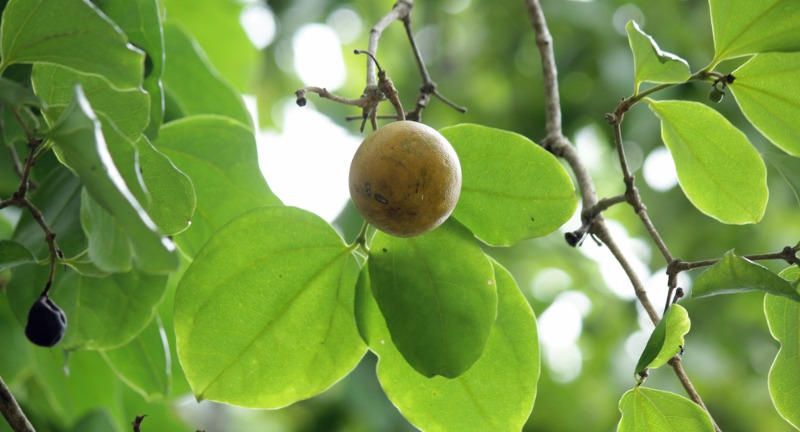
Shutterstock
The Strychnine Tree might not sound like a friendly neighbor, and for good reason—it’s the source of one of the world’s most infamous poisons. Its seeds are so potent that even a tiny dose can trigger convulsions and, eventually, death. Historically, it’s been used in everything from rat poison to, well, more nefarious purposes. Think of it as nature’s way of saying, “Handle with extreme caution.”
Wolfsbane
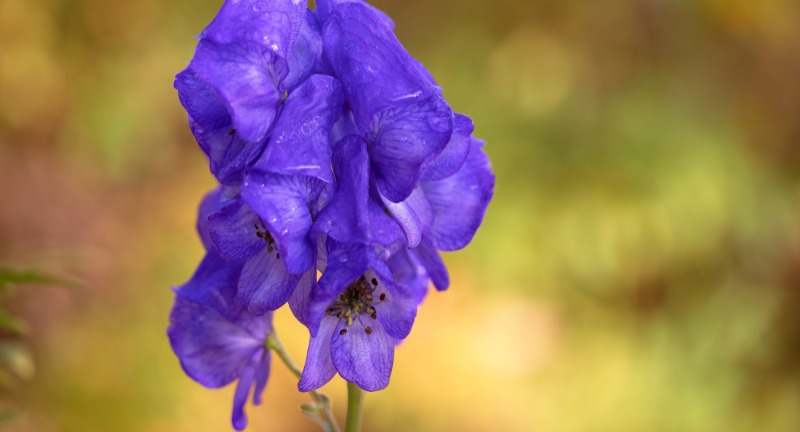
Shutterstock
Wolfsbane doesn’t just sound like a potion ingredient—it’s also one of the most storied toxic plants in history. It was believed to ward off werewolves and witches, which might explain its eerie reputation. In reality, it’s packed with toxins that can stop your heart faster than you can say “supernatural.” Admire its beauty, but leave the werewolf defense to someone else.
Hemlock Woolly Adelgid
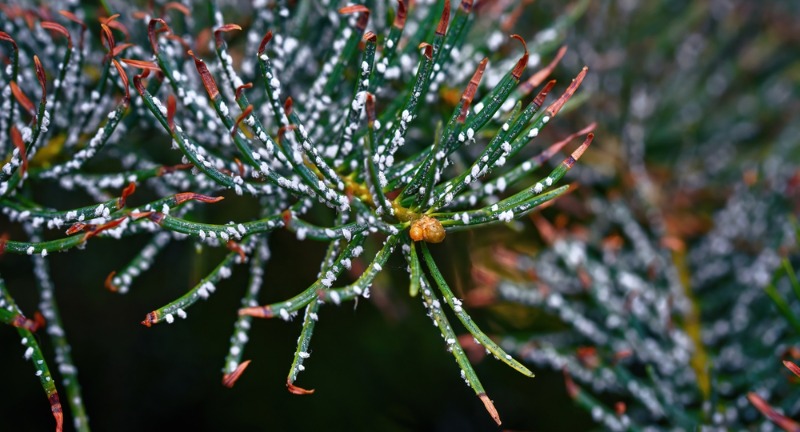
Shutterstock
If you spot a plant with beautiful, white, cottony adornments, think twice before getting too close to it, because it may not be a plant at all! This tiny, aphid-like insect feeds on the sap of hemlock trees, weakening them over time and often leading to their death. Though they are not harmful to humans, their ability to decimate entire forests of hemlocks has made them a major environmental threat. The real danger lies in the disruption they cause to ecosystems, affecting wildlife and even human activities reliant on these vital trees.
Manchineel Tree
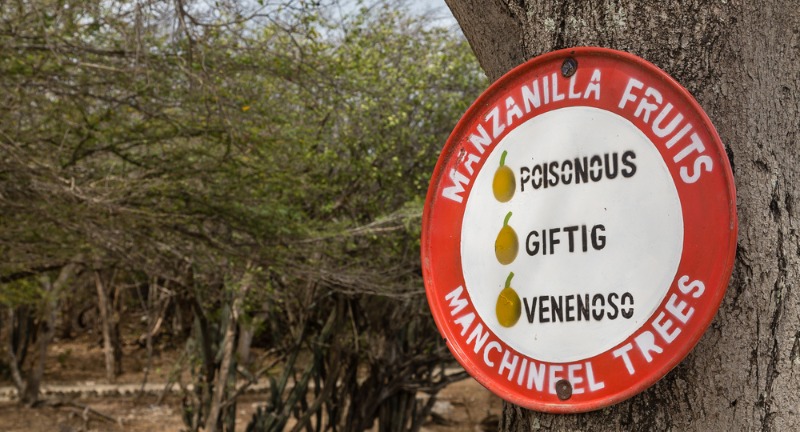
Shutterstock
The Manchineel Tree is sometimes called the “Tree of Death,” and for good reason. Its sap causes burns, its fruit can kill, and even standing under it during rain can be dangerous. Despite its lethal reputation, it looks deceptively inviting, like a tropical vacation nightmare. Here’s a friendly tip: if you’re in the Caribbean, resist the urge to snack on unfamiliar fruit.
Moonseed
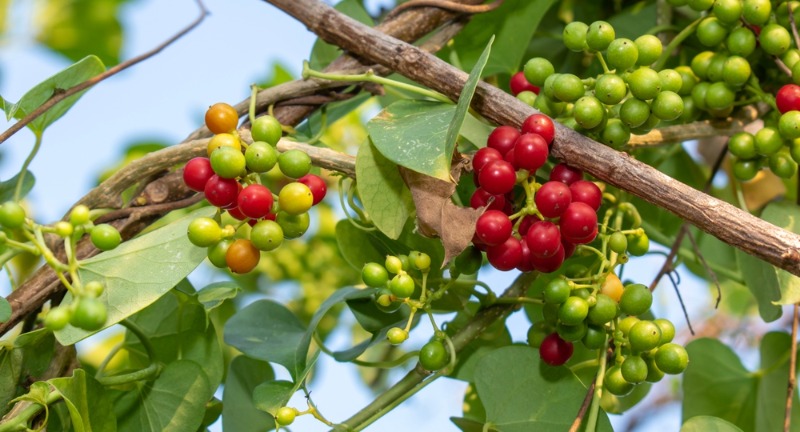
Shutterstock
Moonseed’s berries look like nature’s candy, but they’re laced with toxic compounds that can cause paralysis. Adding to the danger, they look a lot like grapes, so it’s easy to make a deadly mistake. Even birds tend to avoid them, which should tell you something. Basically, Moonseed is a trickster dressed up as a snack.
Bloodroot
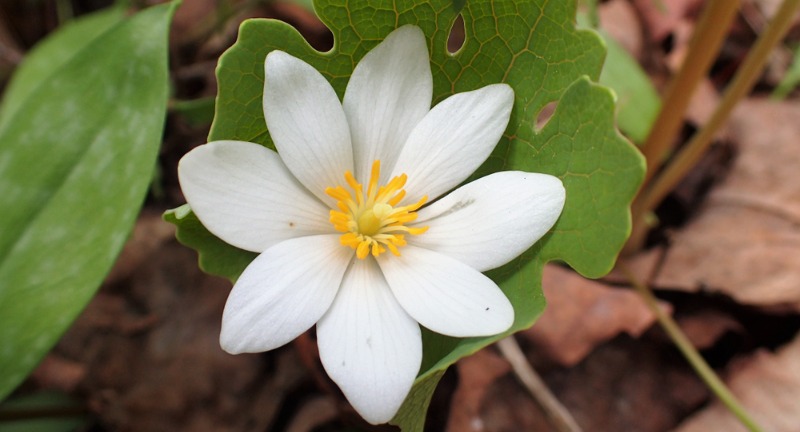
Shutterstock
Bloodroot is a striking early spring perennial, known for its white, papery petals that bloom from the base of a deep green leaf. While the flowers are undeniably beautiful, the plant’s name comes from the reddish sap found in its rhizomes, which has historically been used for medicinal purposes—though it is toxic if not handled properly. The roots contain alkaloids that can cause severe irritation if ingested or applied to the skin. Despite its allure, Bloodroot is a plant to be admired from a safe distance, as its beauty masks the potential for harm.
Daphne
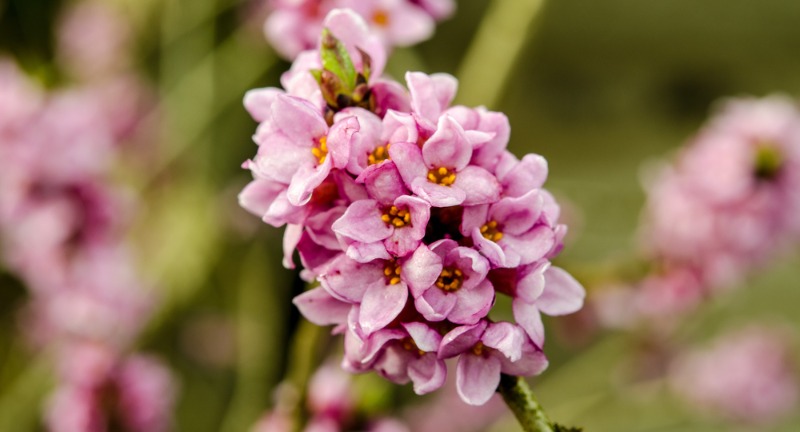
Shutterstock
Daphne’s delicate blossoms and intoxicating fragrance lure you in, but don’t be fooled. Its berries are highly toxic, especially to children, making it a risky addition to any garden. It’s like the plant version of a soap opera character—beautiful, dramatic, and not to be trusted. Keep your admiration at arm’s length, just to be safe.
Poinsettia
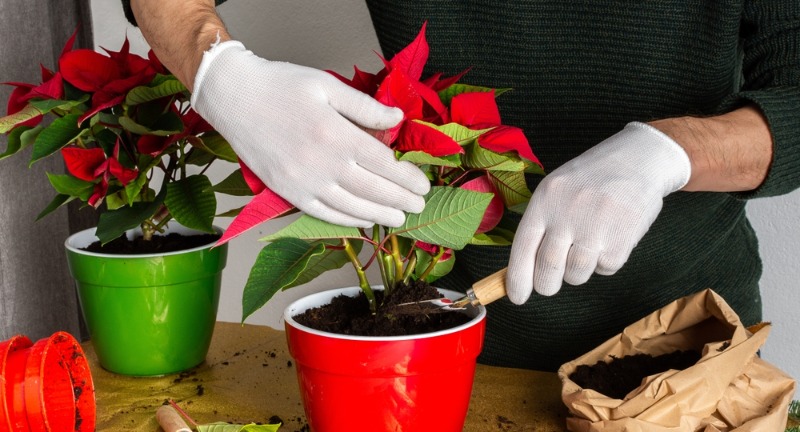
Shutterstock
The Poinsettia is the holiday season’s sweetheart, but it’s also mildly toxic, especially for pets. While it won’t kill you or your furry friends, it can cause unpleasant reactions if ingested. Ironically, its cheery red leaves are designed to make you forget all that. It’s a plant that brings holiday cheer—but could maybe warrant a gentle warning label.
Yellow Jessamine
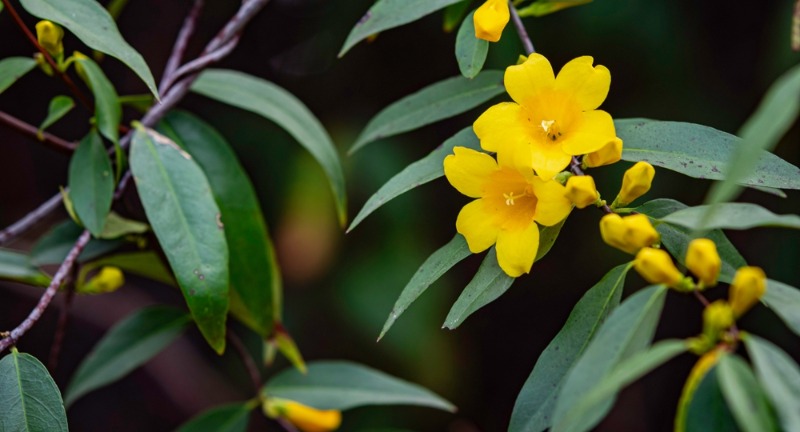
Shutterstock
Yellow Jessamine is the state flower of South Carolina, but it’s not as innocent as it seems. Its nectar is toxic to humans and honeybees alike, turning what looks like a sweet, sunny plant into a quiet menace. Even its alluring fragrance can’t hide its deadly secret. Admire it, but maybe don’t start planting it in your pollinator garden.
Bleeding Heart
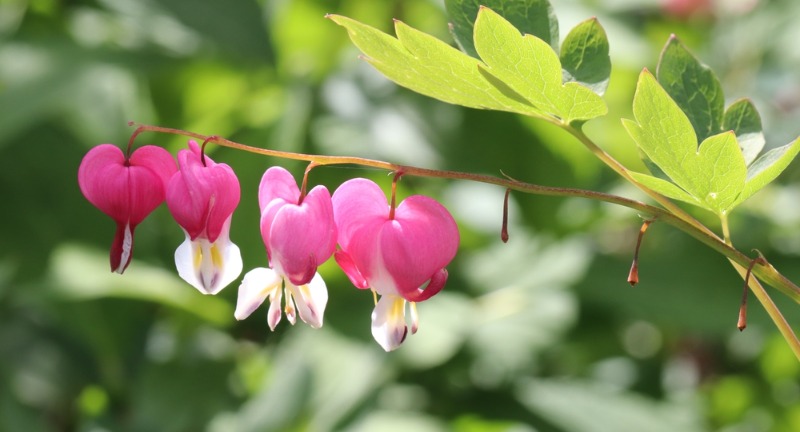
Shutterstock
The Bleeding Heart is a plant that immediately captures attention with its unique, heart-shaped blooms that dangle delicately from arching stems, often in shades of pink or white. While it may seem like a whimsical garden favorite, this plant contains compounds that are toxic if ingested, particularly the roots and leaves. Consuming even small amounts can cause symptoms like nausea and heart irregularities. Its beauty can be beguiling, but it’s a reminder that not all enchanting flowers are harmless.
Mountain Laurel
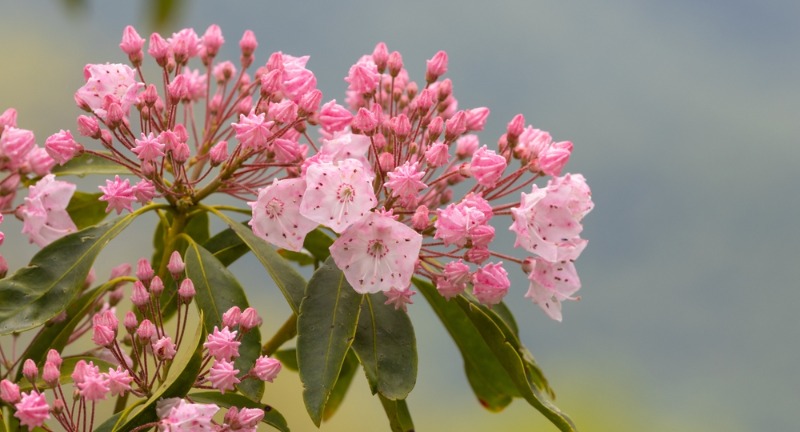
Shutterstock
Mountain Laurel is as picturesque as a postcard, but don’t let its beauty lure you into a false sense of security. Every part of this plant is toxic, and ingesting it can lead to nausea, paralysis, or worse. Even honey made from its nectar can be harmful—earning it the nickname “mad honey.” It’s basically nature’s way of saying, “Look, don’t touch.”
Rhododendron
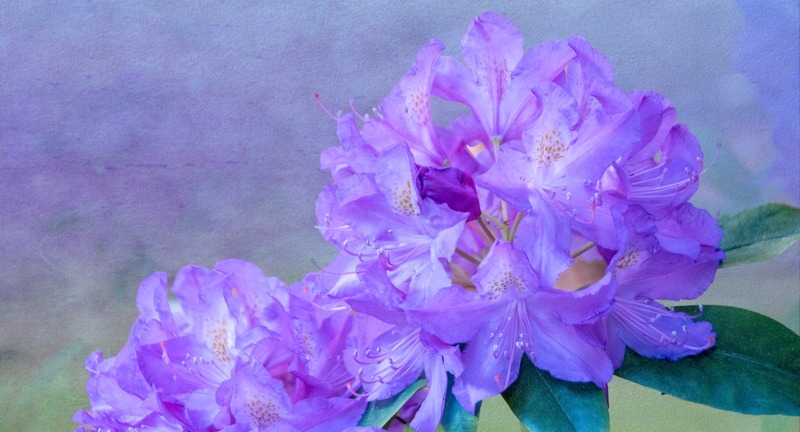
Shutterstock
Rhododendrons are among the most stunning landscape plants, with their large clusters of vibrant flowers in shades of pink, purple, and white. However, beneath their striking beauty lies a dangerous secret: they contain grayanotoxins, compounds that can cause symptoms such as vomiting, dizziness, and irregular heartbeats if ingested. While they make for a colorful garden feature, caution is advised when it comes to children or pets, as these seemingly innocent blooms can pack a deadly punch.
Dieffenbachia (Dumb Cane)
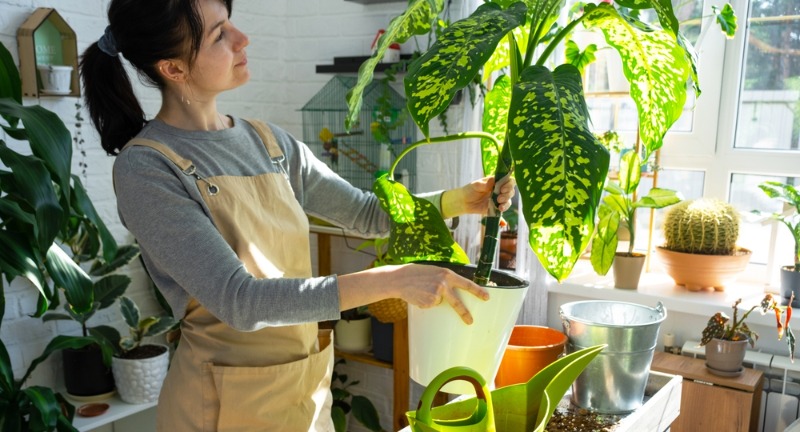
Shutterstock
Dieffenbachia, charmingly nicknamed Dumb Cane, doesn’t mess around when it comes to defending itself. Its sap contains oxalates that can cause painful swelling, and in extreme cases, temporary loss of speech. Perfectly safe as a houseplant, as long as no one takes a bite—but let’s face it, who’s eating houseplants? Consider it a silent guardian of your indoor jungle.
Wisteria
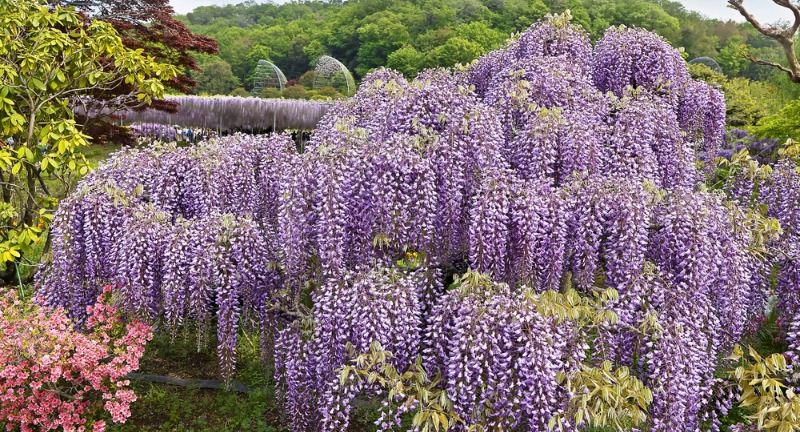
Shutterstock
Wisteria is a stunning climbing vine, known for its cascading clusters of fragrant purple or white flowers that create a picturesque scene in gardens. However, despite its beauty, every part of the plant—especially the seeds and pods—is toxic if ingested. Consuming even a small amount can lead to symptoms like nausea, vomiting, and diarrhea. While its appearance is enchanting (and could honestly make a work of art out of any pergola), Wisteria is a plant that requires caution, particularly around children and pets who may be tempted to taste its colorful blooms.
Cerbera Odollam
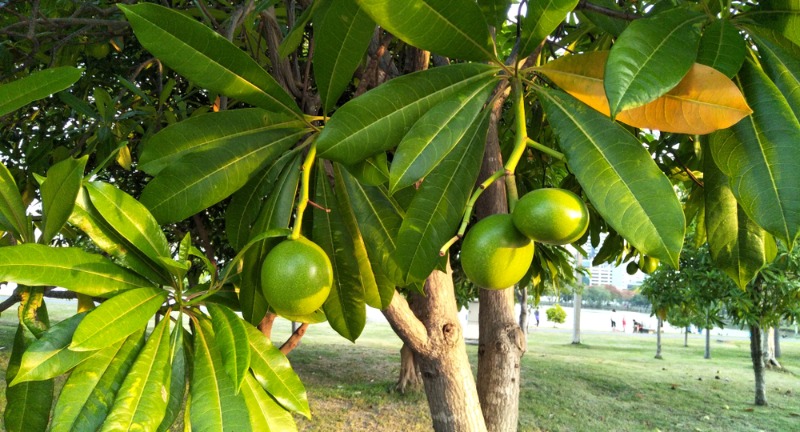
Shutterstock
Cerbera Odollam is a highly toxic tree with fragrant white flowers that seem almost too beautiful to be dangerous. The plant’s seeds contain cerberin, a potent toxin that can cause severe heart issues or even death if ingested. Historically, the seeds have been used in various regions for their lethal properties, as they’re both powerful and deceptively easy to come by. Despite its allure, this tree should be avoided at all costs due to its potent toxicity, making it a dangerous addition to any landscape.
Desert Rose
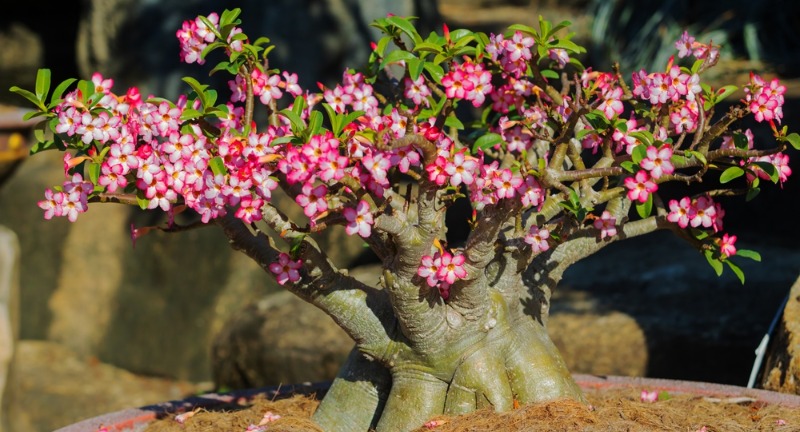
Shutterstock
The Desert Rose is a stunner in any arid garden, but its sap is a no-go zone. Used traditionally as poison for hunting arrows, it’s not the plant to mess with. Despite its deadly reputation, it’s still a popular ornamental—because gardeners can’t resist a little danger. Just keep it away from curious hands and pets.
Pitcher Plant
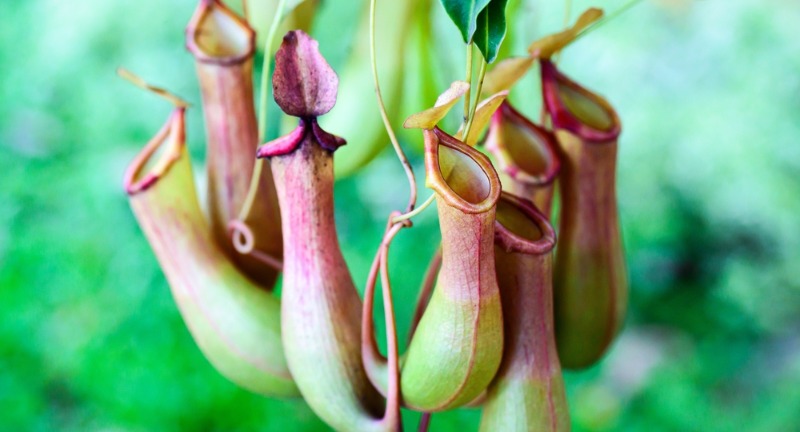
Shutterstock
Pitcher Plants are nature’s perfect traps, luring insects with sweet nectar before letting them slide into a pit of no return. They digest their prey with enzymes, proving that even plants have a carnivorous side. While they’re harmless to humans, their insect victims would beg to differ—if they could. These botanical hunters are a reminder that the plant world isn’t always passive.
Sweet Pea
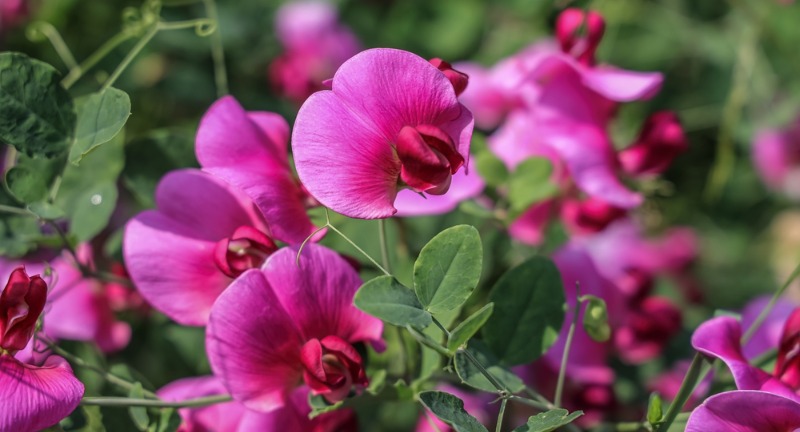
Shutterstock
Sweet Pea is a garden favorite, known for its delicate flowers and enchanting fragrance. But don’t be fooled—its seeds contain a toxin that can cause paralysis if consumed in large amounts. It’s a plant that walks the line between beauty and danger. A little admiration is fine; a little nibble is not.
Conclusion
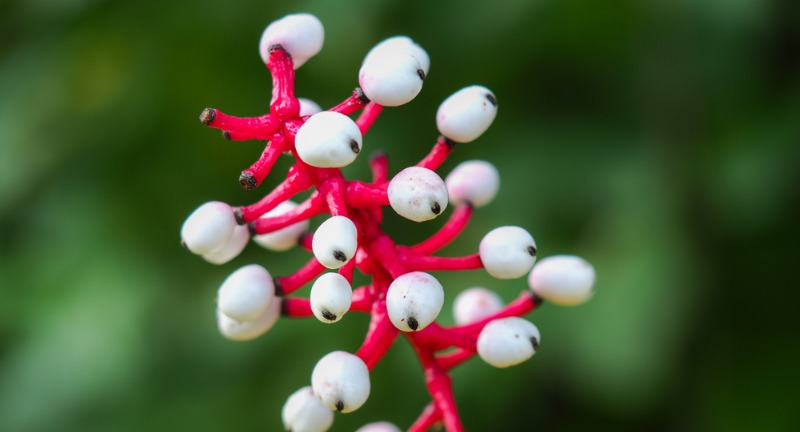
Shutterstock
And there you have it—a lineup of plants so stunning they could win a beauty pageant, but so dangerous they might also rig the competition. From venomous leaves to insect-devouring traps, these botanical wonders prove that looks can indeed kill. If nothing else, they remind us that nature is as much about balance as it is about beauty—equal parts awe-inspiring and absolutely terrifying. Don’t be afraid to stop and smell the flowers, but remember not to stick your nose in so close!
More From Bon Voyaged
-


A Traveler’s Guide to the Most Beautiful Botanical Gardens on…
-


25 Most Popular Flowers To Use For Your Holiday Decorations
-


27 Wellness Inspired Trips To Add To Your Bucket List
-
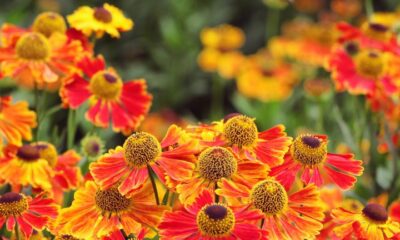

25 Flowers And Plants That Thrive Going Into The Autumn…
-


25 Cities From Around The World That Are Actually Considered…
-
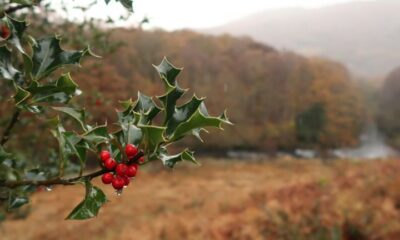

27 Evergreen Plants That Are Beautiful All Year Long
-


Top 20 USA Destinations For All The Fall Spooky Cozy…
-
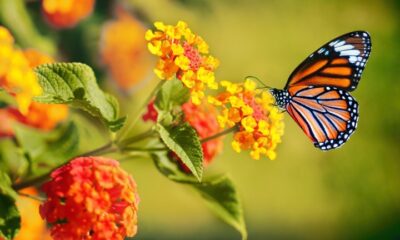

30 Beautiful Flowers That Love Warmer Weather

